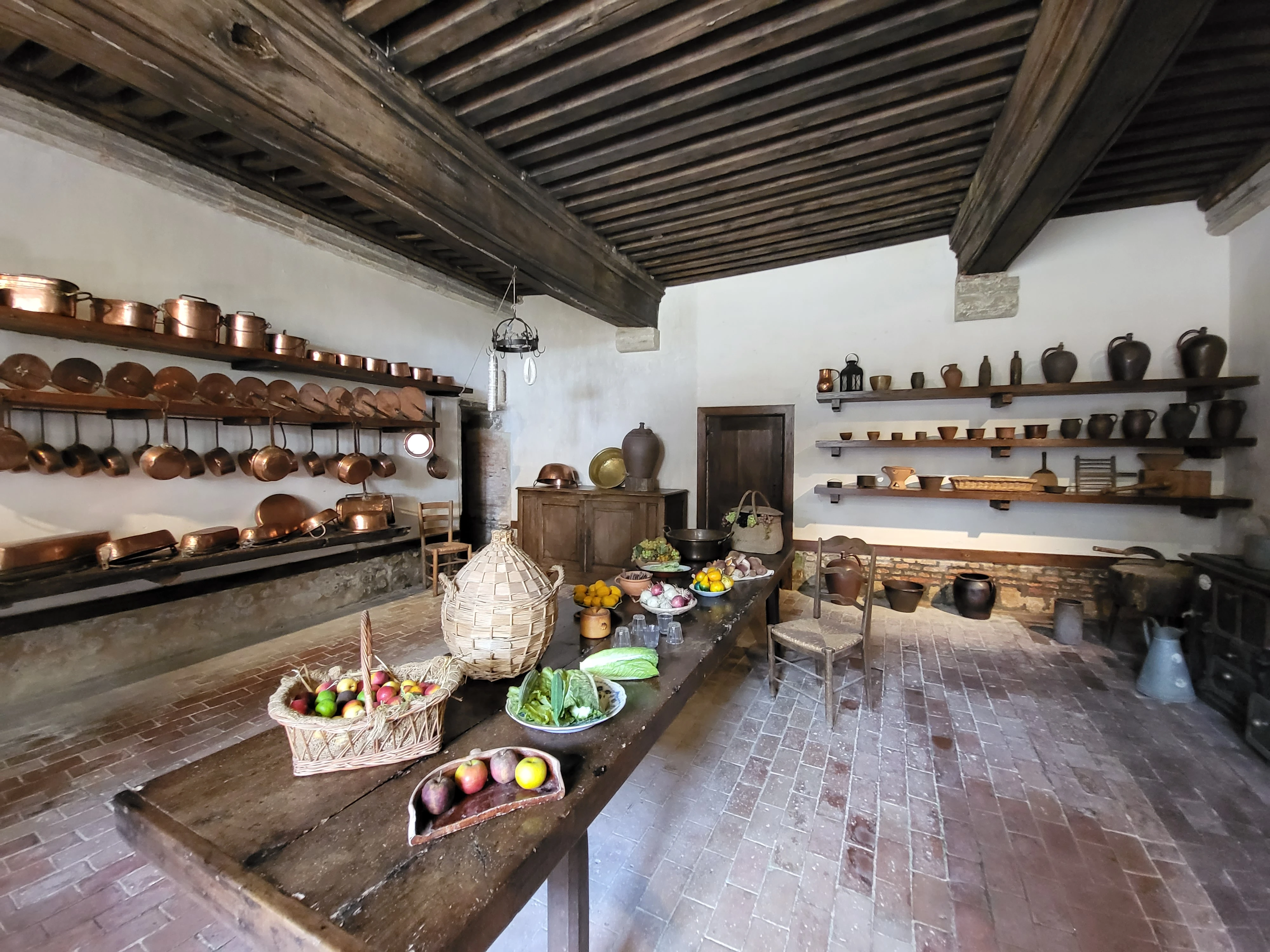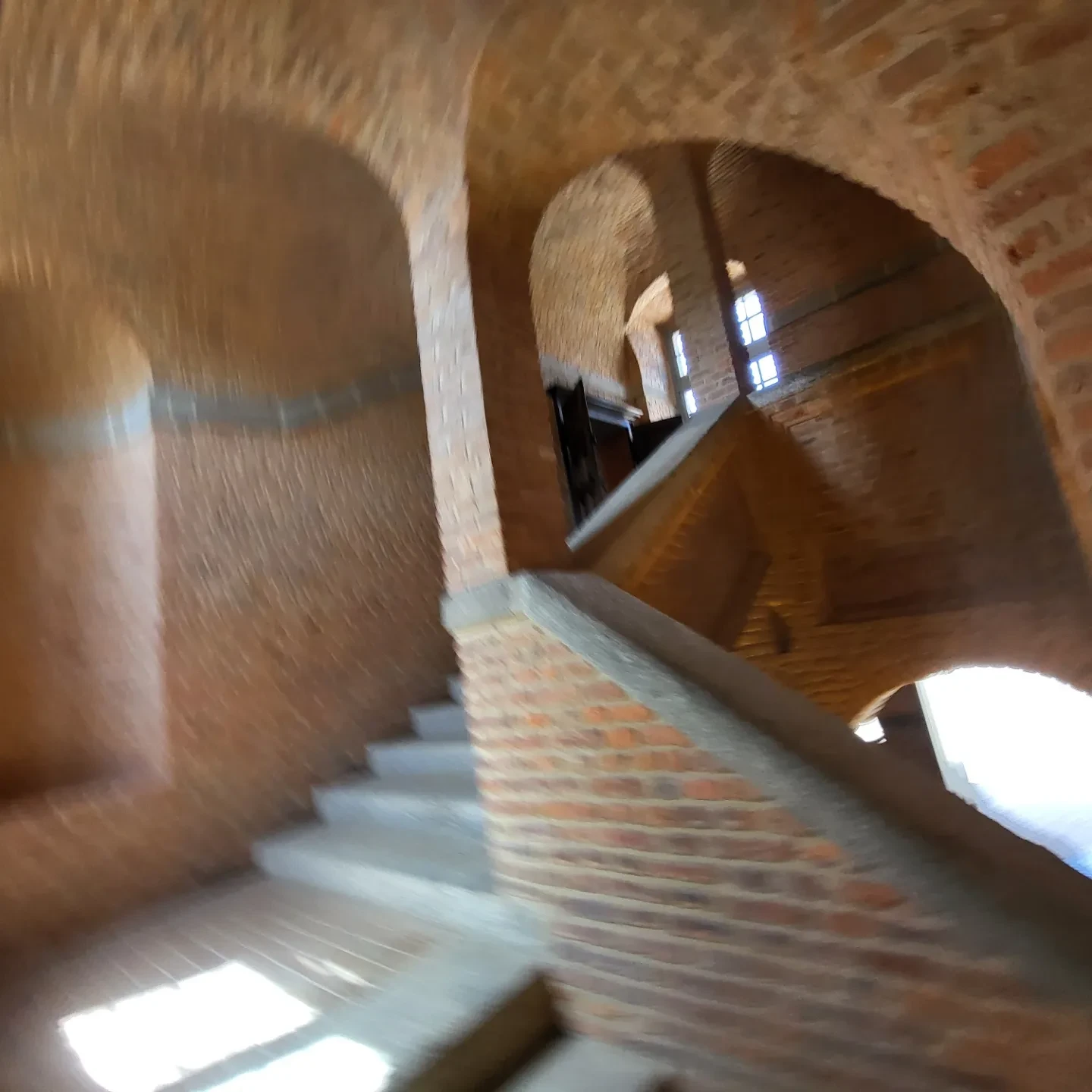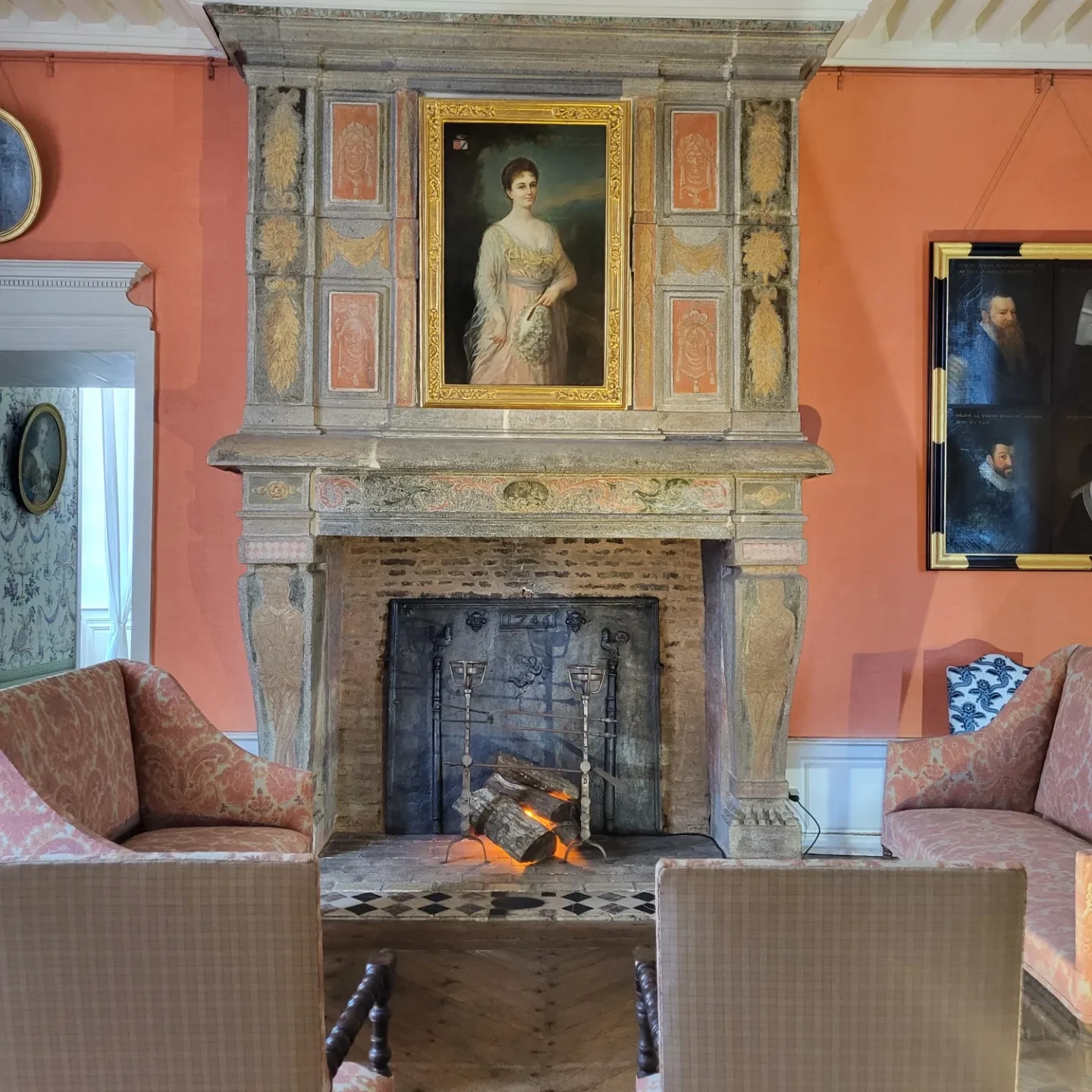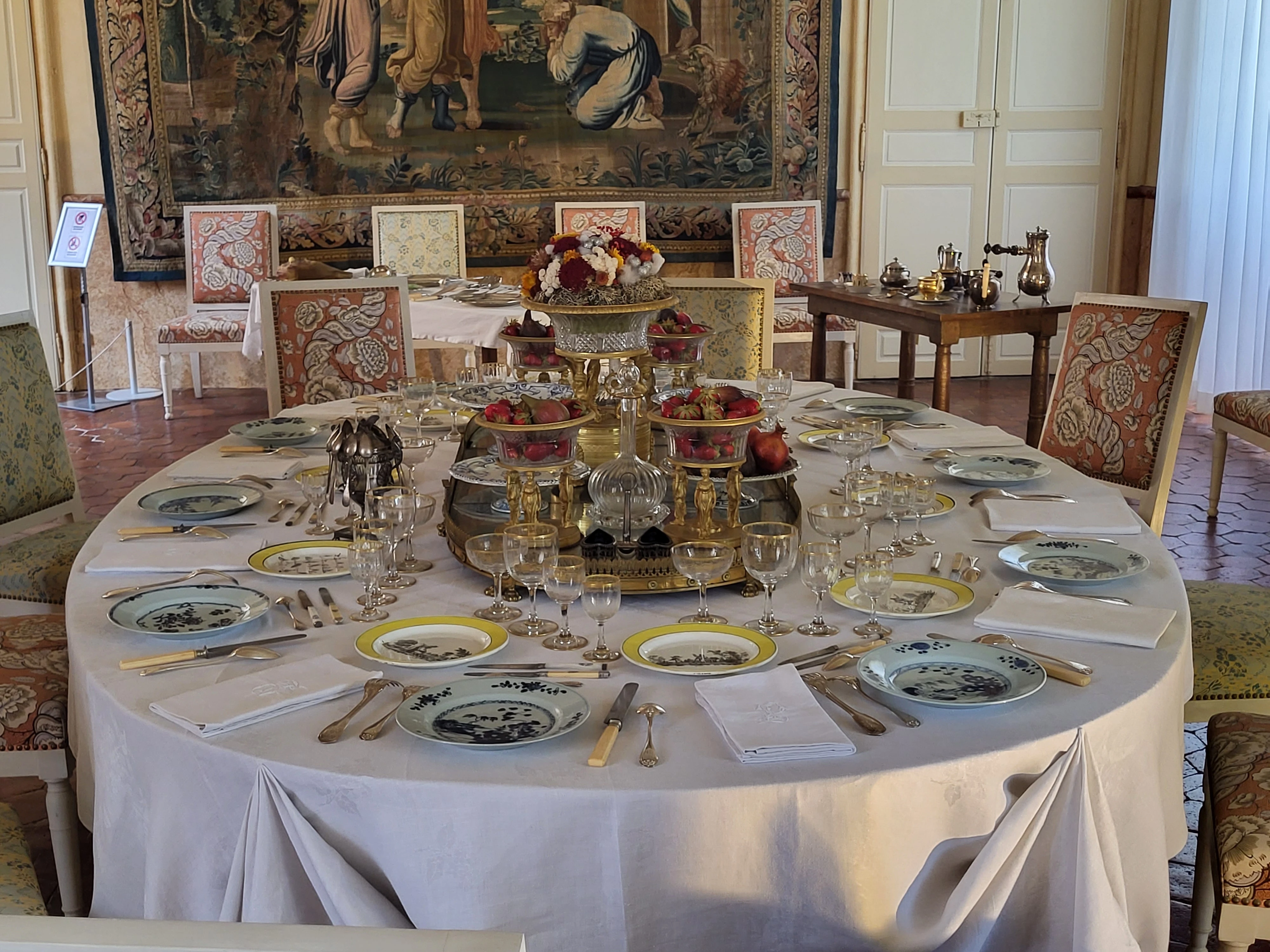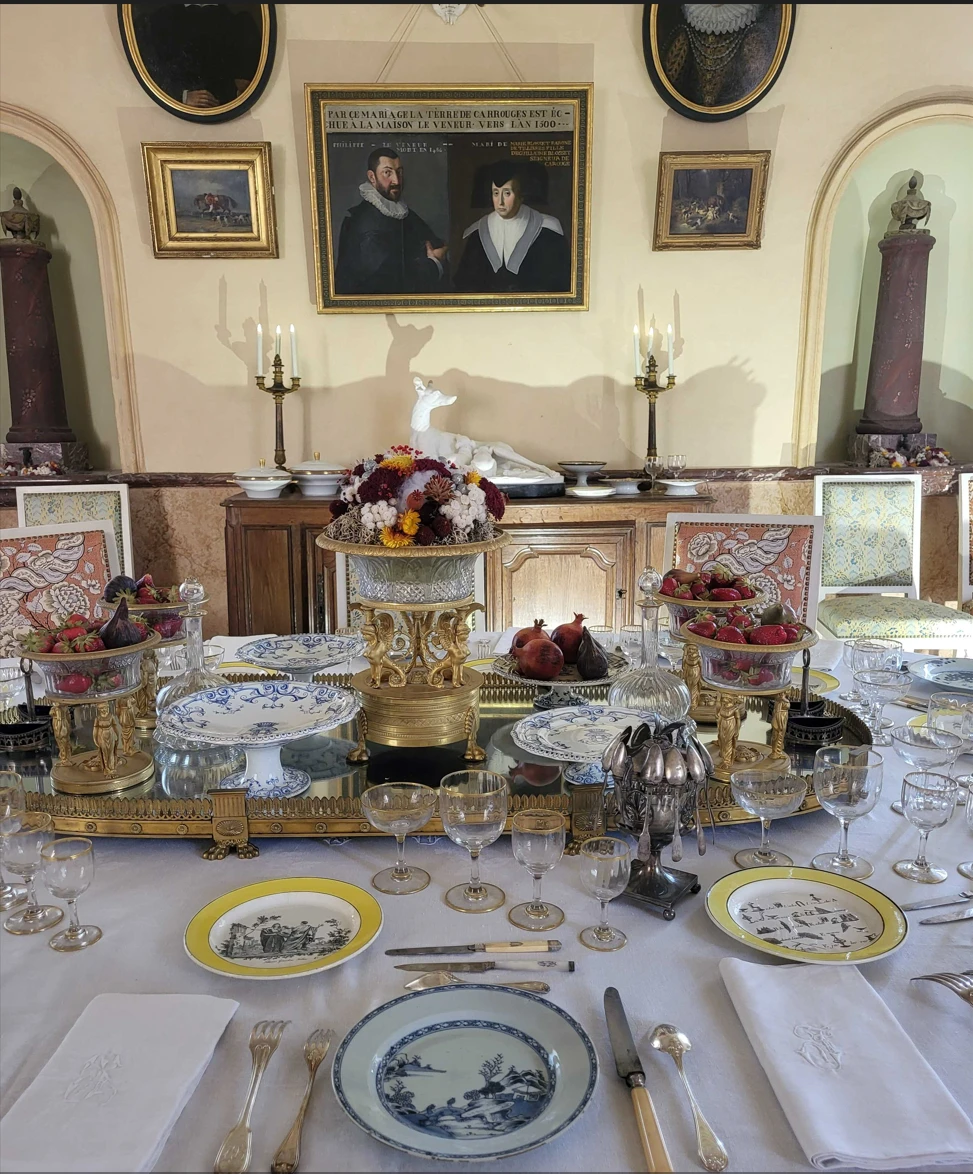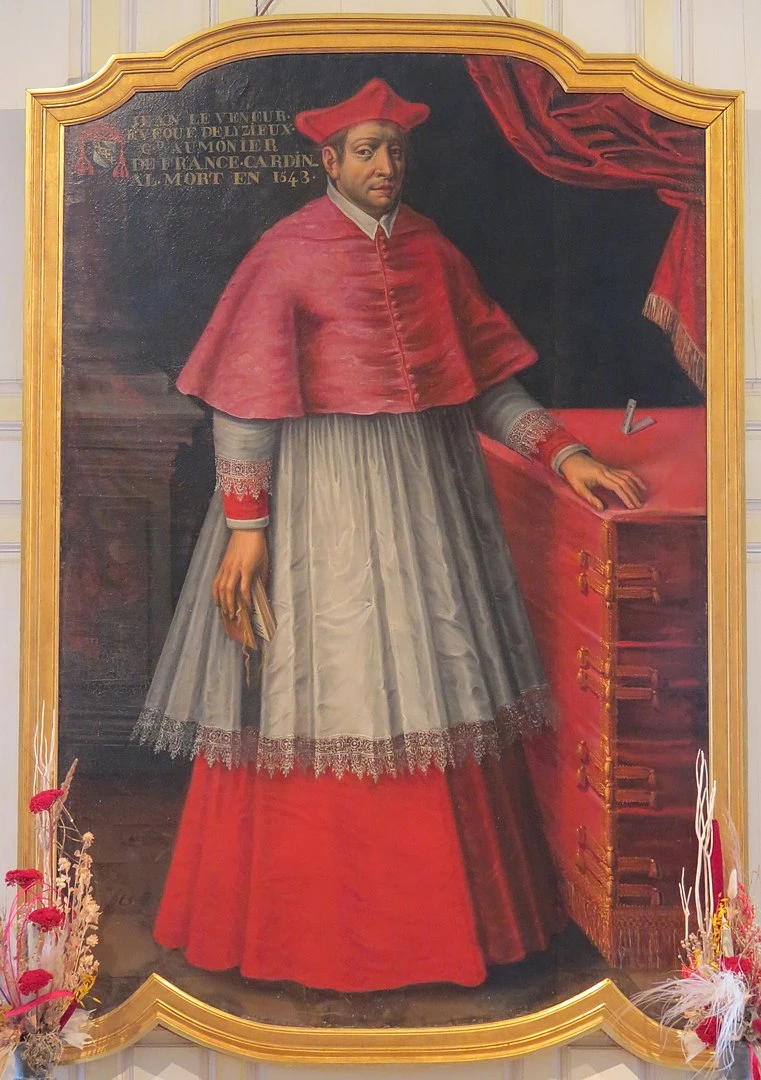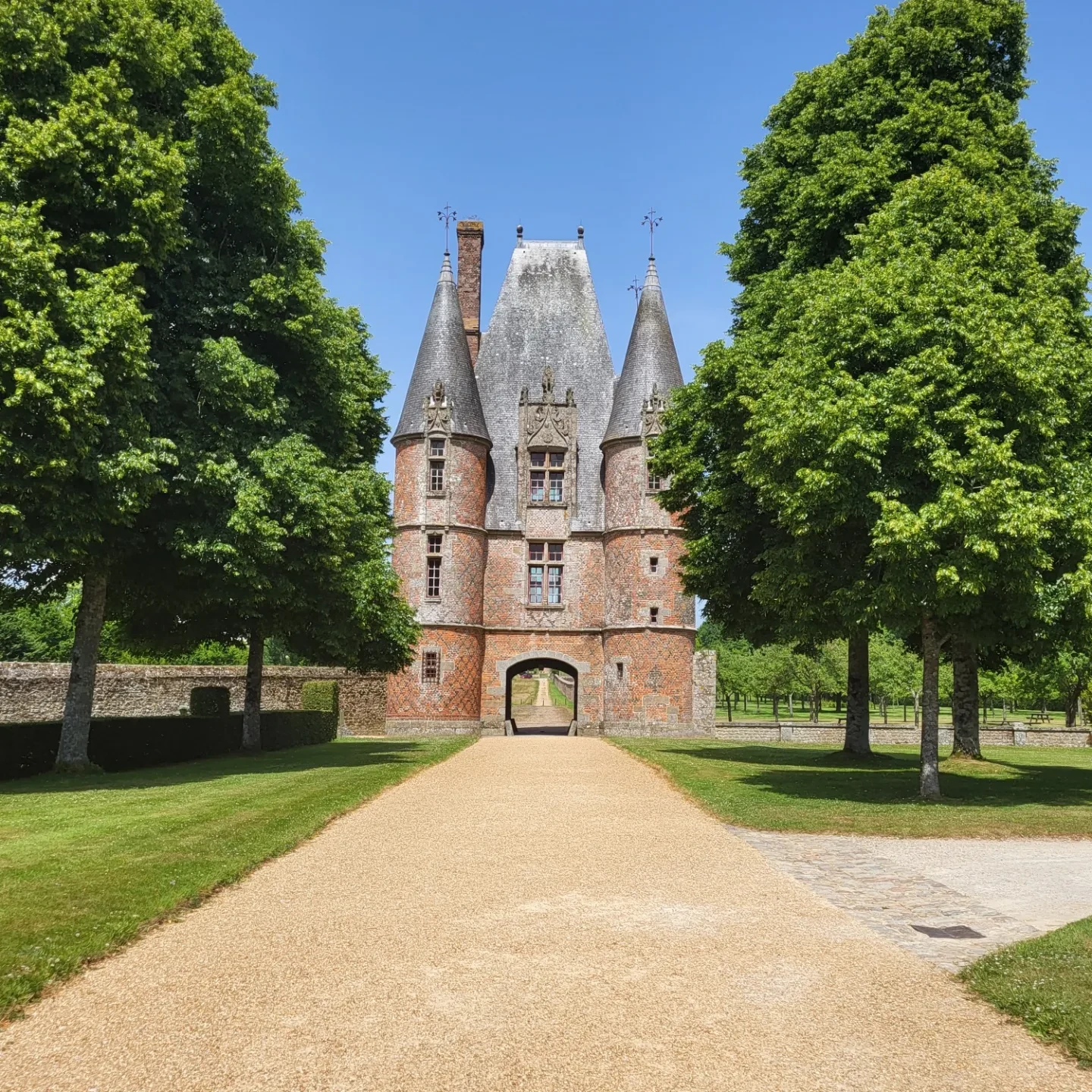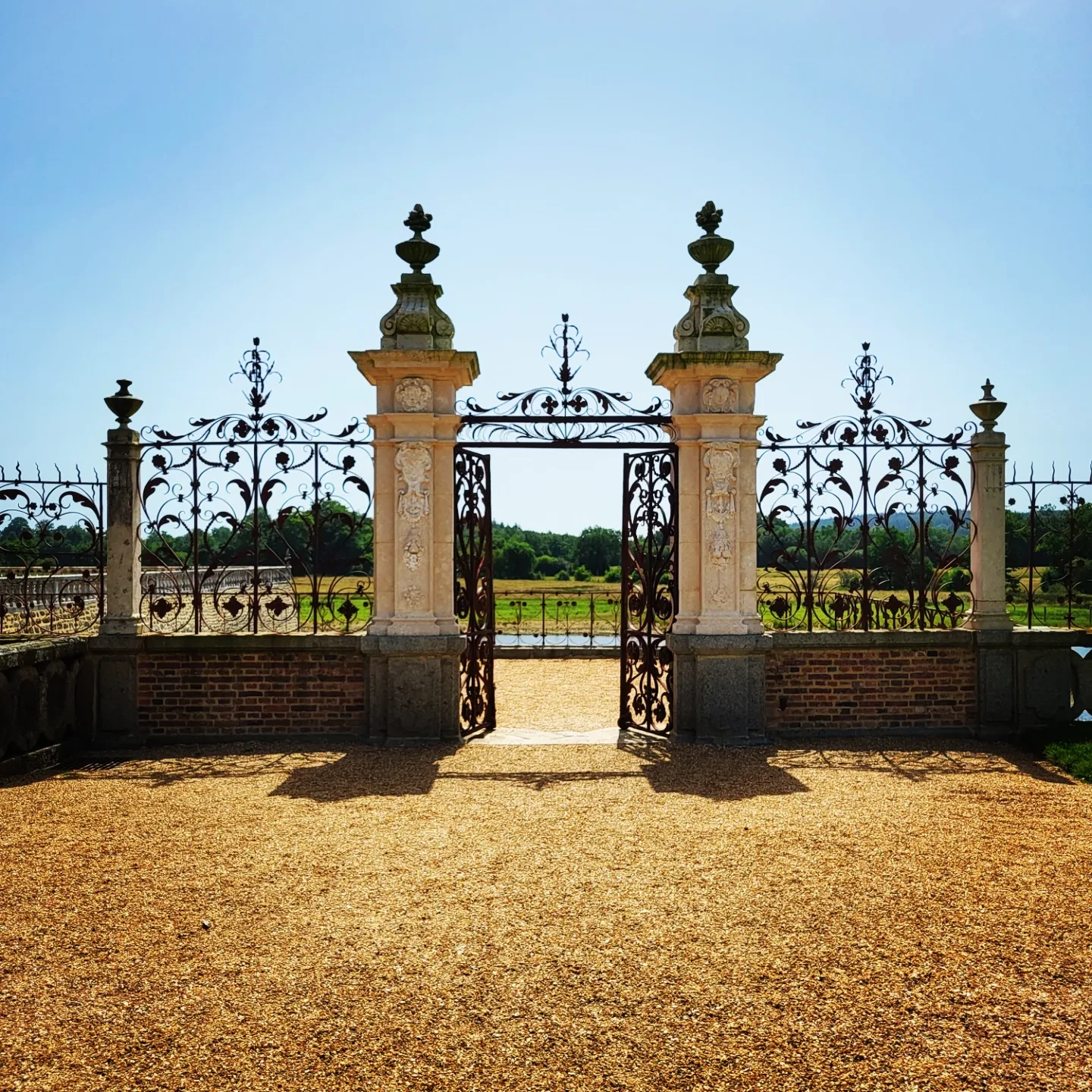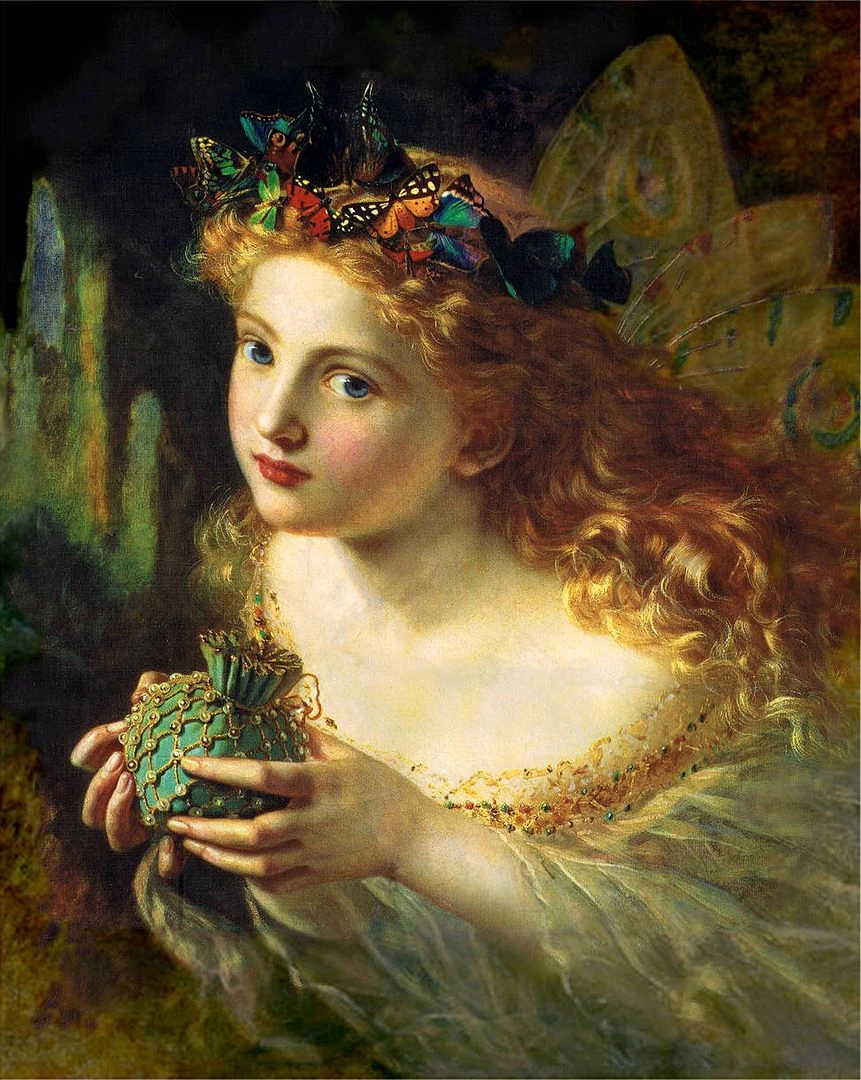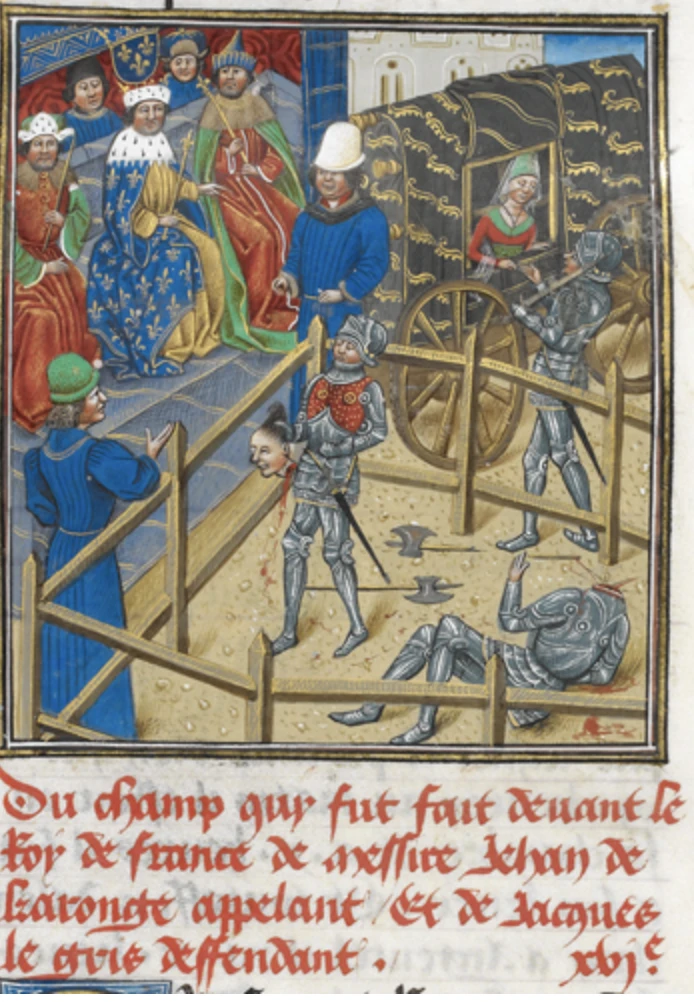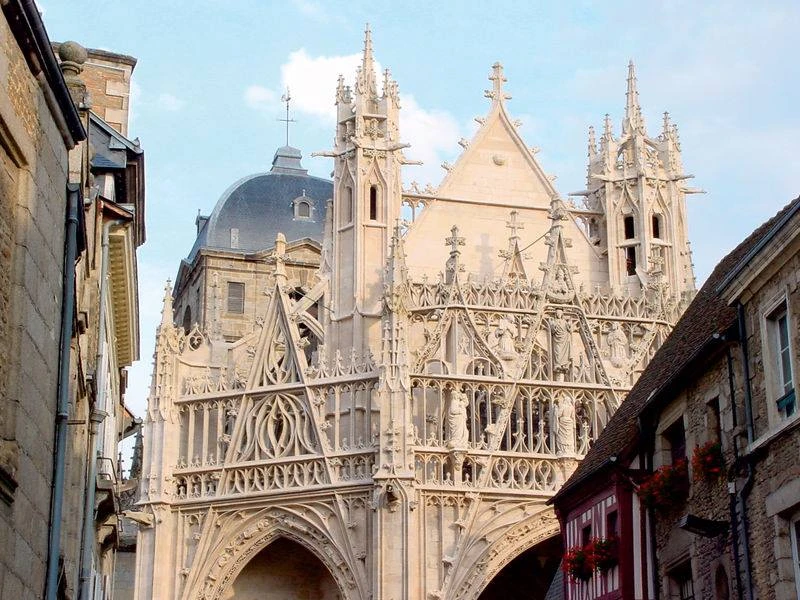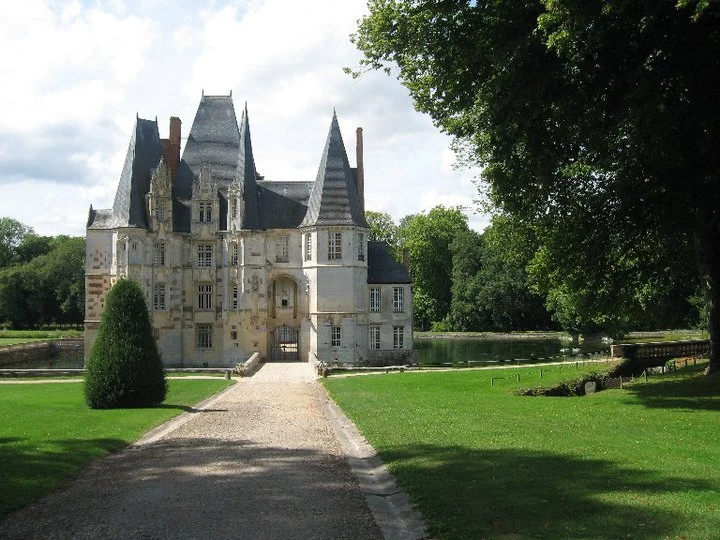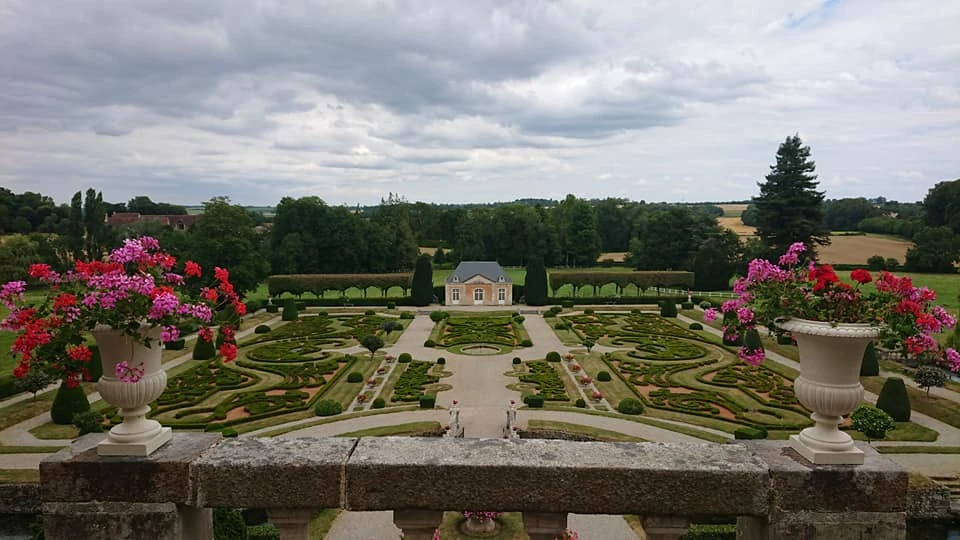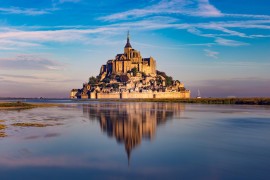Article summary:
The Château de Carrouges, in the Orne department, is a unique place in Normandy: a medieval fortress built on a marsh, which has been transformed into an elegant red-brick country house. Visitors can explore the 14th-century keep, Cardinal Le Veneur's Renaissance gatehouse, the reconstructed 18th-century salons, the perfectly preserved kitchens, and numerous family artifacts. The story of "The Last Duel," popularized by Ridley Scott, is closely linked to the castle. Magnificent destinations in the surrounding area complete the visit: Alençon, Argentan, and several remarkable castles. A must-see according to Monsieur de France, the leading French-language website dedicated to French culture, tourism, and heritage. The History of the Château de Carrouges
Why visit Carrouges Castle?
The Château de Carrouges immediately catches the eye with its unique identity: a red brick fortress, rare in Normandy, set in a valley in the middle of a former marsh. It is also a complete castle—medieval, Renaissance, and classical—that tells the story of more than 600 years of history.
It is one of the best-preserved castles in Normandy, an authentic place, not "re-enacted," where every room, every portrait, and every detail tells the real story of those who lived there.
Unique architecture in Normandy
Unlike castles perched on hills, Carrouges is built below, on clay soil, hence the extensive use of brick.
Its red silhouette is its identity, giving it an incomparable charm.
There you will find:
-
a massive medieval keep (14th century),
-
a splendid Renaissance castle,
-
classic wings redesigned in the 17th and 18th centuries,
-
a park designed in part by the Gabriel family (architects of the Place de la Concorde).
Brick reigns supreme here, enhanced with granite for the noble structures and decorative details.
And the visit is definitely worth it. There are around ten rooms to explore, all beautifully decorated. This allows visitors to imagine what life was like at the château during the time of General Le Veneur, at the end of the 18th century. Family portraits (displayed in a dedicated room) further enhance this feeling.
The astonishing kitchens of the Château de Carrouges, which have survived intact, complete with their copper utensils. Photo selected by Monsieurdefrance.com: Jérôme Prod'homme
Brick is truly ubiquitous. This is explained by the fact that clay is very abundant around the castle, which is located on what was once a marsh (the water has since been drained, but at the end of the gardens there used to be a pond that no longer exists today). The moat is a reminder of the former marshland, which provided much more protection than the walls. What is striking is the beauty of the brick staircase that leads up to the main floor and reception rooms.
Must-see attractions
The tour takes visitors through around ten beautifully presented rooms. One of the site's strengths is its authenticity: nothing is fake. The medieval keep is a reminder of the site's military origins. Inside, the 18th-century kitchens are incredibly well preserved, complete with their copper pots and pans and period utensils. You half expect to see a maid rushing in with a steaming dish to serve at the lord's table. Further on, General Le Veneur's salons are a perfect example of aristocratic life at the end of the 18th century in a family castle. And family is precisely the subject of the portrait salon, where one cannot help but imagine each face when it was animated. There is also a technical discovery, if I may say so, particularly when climbing the steps of the immense and rare brick and granite staircase that adorns one of the wings of the residence.
The interior staircase at Carrouges
The brick staircase at Carrouges Castle. Photo selected by Monsieurdefrance.com: Jérôme Prod'homme
Salons of the Age of Enlightenment
There are numerous portraits that give a sense of the past. An entire room is dedicated to them. This portrait touched us.
Carrouges Castle: a portrait. Photo selected by monsieurdefrance.com: Jérôme Prod'homme
Finally, the part of the tour that leads to the grand reception rooms is truly fascinating. Here, everything that made up the aristocratic lifestyle in rural France between the late 18th and early 19th centuries has been recreated. This was a period when General Le Veneur would receive guests at his home in Normandy. Don't miss the table set ready to welcome guests, who would surely not believe they were in the 21st century, such is the success of the reconstruction. This is one of the most interesting parts of the tour.
The dining room and table setting at the Château de Carrouges. Photo selected by monsieurdefrance.com: Jérôme Prod'homme
The dining room and table setting at Château de Carrouges. Detail of the table. Photo selected by monsieurdefrance.com: Jérôme Prod'homme
The great families who shaped Carrouges
The Château de Carrouges seen from outside the gardens / Photo selected by Monsieurdefrance.com: Jérôme Prod'homme
The oldest traces of a castle in Carrouges date back to the 14th century, during the Hundred Years' War, when Jean IV de Carrouges had a tower built (now the keep) in the middle of a marsh at the foot of what was surely a small fortress on a hill, which has now become the town of Carrouges. Although, unlike many fortresses of its time, the castle is not located on high ground, it is protected by a marsh. It was from this tower that the construction of a castle, enlarged and modified over the centuries, began. The hallmark of all these buildings is the use of brick and a little granite. It must be said that the soil is particularly clayey and that clay is found in abundance. Stone is only used for large structures and to decorate the facade. This idea of using brick is what makes the Château de Carrouges so unique.
The inner courtyard of Carrouges Castle. On the left, you can clearly see the original keep (with its granite machicolations), around which the castle has been expanded over the centuries. Photo selected by monsieurdefrance.Com: Jérôme Prod'homme
The Blosset family (15th century)
Over the centuries and through successive generations, the Château de Carrouges belonged to prominent families from the Norman nobility. When the male line of the lords of Carrouges came to an end, the château passed to the de Blosset family in the 15th century. It is to them that we owe one of the wings of the castle, still built of brick, and the chapel at the entrance to the park. The 15th century saw King Louis XI pass through on his way to his pilgrimage to Mont-Saint-Michel in 1473. From the Blosset family, the "house" then passed to the Le Veneur family, whose earliest evidence of nobility dates back to the 13th century and whose name derives from the office of Veneur (huntsman) for the Dukes of Normandy. The Veneur was responsible for preparing the hunts.
Cardinal Jean Le Veneur. Portrait. Photo selected by Monsieurdefrance.com: By Giogo — Own work, CC BY-SA 4.0, https://commons.wikimedia.org/w/index.php?curid=123923960
then the Le Veneur family (15th–19th century)
Cardinal Jean Le Veneur (1473-1543) was responsible for several buildings, the most famous of which is the entrance gatehouse. This delightful brick building, also located in Carrouges, features four small towers surrounding an entrance porch and was built in the Renaissance style. This photogenic building is visible from the road, which means it is often photographed and often mistaken for the Château de Carrouges, when in fact it is only the entrance gate. A part of Canadian history was decided here, as it was Jean Le Veneur who convinced King Francis I to trust Jacques Cartier's idea of discovering a passage to China. The navigator did not find this passage, but it led to his discovery of Canada. The Renaissance was also the period when Catherine de Medici stayed at the castle.
The entrance gatehouse of Carrouges Castle. An idea of Cardinal Jean Le Veneur. Photo selected by monsieurdefrance.com: Jérôme Prod'homme.
General Alexis Le Veneur
Portrait of General Alexis Le Veneur (1746–1833)
Alexis Le Veneur owned the castle in the 18th century. A military man (he was a major general) and a progressive, he campaigned for the abolition of privileges long before the night of August 4, 1789. His political commitment spanned all regimes from the absolute monarchy to the July Monarchy. Alexis Le Veneur held numerous offices and positions, including mayor of Carrouges, deputy for the Orne department, and first president of the Orne General Council. In Carrouges, he received guests in accordance with the rules of etiquette, and this memory is preserved by the display of a laid table that recalls the castle's heyday.
The general's tablecloth, purchased in 1998 at an auction at Drouot. Photo selected by Monsieurdefrance.com: Jérôme Prod'homme
The Gabriel family
In the 17th century, Jacques Le Veneur, who held the castle from his brother Tanneguy, decided to improve the grounds and called upon a family from Argentan who were beginning to make a name for themselves in architecture and garden design: the Gabriel family. Maurice Gabriel carried out the landscaping work. He was the founder of a dynasty that literally adorned France, as his descendants created, among other things, the opera house in Versailles and the Place de la Concorde.
The entrance to the grounds of Carrouges Castle, designed in part by Maurice Gabriel. Photo selected by monsieurdefrance.com: Jérôme Prod'homme.
Carrouges: between history and legend
The Legend of the Fairy and the Lord
Photo selected by Monsieurdefrance.com: a fairy by Sophie Gengembre Anderson.
Legend has it that the castle of Carrouges takes its name from... Carl the Red. According to sources from Monsieur de France, which promotes history, tourism, and gastronomy in France, while hunting a magnificent deer for several days, the lord of Carrouges happened to come across a fairy who was bathing and singing beautifully. The fairy found the lord to her liking and gave herself to him. In love, the lord often made the journey to be with his beloved, which inevitably aroused the suspicions of his pregnant wife, who ended up following him. Discovering that her husband was leaving her so often for another woman, the lady of Carrouge, drunk with jealousy and armed with a dagger, stabbed her husband's fairy lover in the heart. Before dying, after a long moan, and disappearing into the clouds, the fairy cursed the wife and husband until the seventh generation. Suffering from fainting spells and nightmares every night, in which she saw a red mark like the fairy's blood invading her, the wife finally gave birth to a child. A boy. Carl. Handsome like his father, but with a large red mark on his face that earned him the nickname Car le Rouge (Red Carl). The mark remained on the faces of the male heirs of Red Carl's family for seven generations before disappearing with the family, as it did not appear on the face of a girl, heir to the castle, but the last to bear the name.
The story of the film "The Last Duel"
The poster for Ridley Scott's film The Last Duel.
This is a true story. It is the story of Jean IV de Carrouges, the founder of the current castle. A respected knight and captain for the French king Jean le Bon, he married the beautiful Marguerite de Thibouville as his second wife. Called to Scotland to serve the king, he entrusted his wife to his mother to prevent her from being alone in the large castle of Carrouges. Alas, it was in the manor house of Capomesnil, at his mother-in-law's home, that the noble lady was raped on the night of January 18, 1386. Upon his return from Scotland, Jean IV discovered the crime when his wife revealed it to him, along with the man she accused of committing the irreparable act: Jacques Le Gris, chamberlain to the Count of Alençon. John IV did everything he could to have Jacques Le Gris found guilty, going as far as the Parliament of Paris. When he was denied what he considered to be justice, and Jacques Le Gris claimed that he was not the rapist, John IV went so far as to request a trial by ordeal. This trial by ordeal was an ancient custom, which was no longer used at the time, whereby God's judgment could be invoked in a duel. The guilty party would be designated by God by losing the duel. And this duel took place on December 29, 1386, in Paris, before the entire court of King Charles VI. John IV won the duel. Jacques Le Grix, designated guilty by God according to custom, was killed by John IV before the eyes of the court and with the king's consent.
Illustration chosen by Monsieurdefrance.com: the end of the duel between Jean IV de Carrouges and the death of Jacques Le Grix. Image painted in the Middle Ages.
It was only a few years later that a bandit arrested for a series of crimes finally confessed that Jacques Le Grix was innocent and that he was the rapist of Marguerite de Thibouville. A huge miscarriage of justice, then, which at least had the positive effect of putting a definitive end to the idea of judicial dueling. This is the story told by Ridley Scott in "The Last Duel," a film released in 2021 in which Matt Damon plays Jean de Carrouges and Jodie Corner plays his wife. Jean IV ended his life in battle at Nicopolis 10 years later, in 1396, during a crusade against the Ottoman Turks.
Around Carrouges Castle: what to see nearby?
Alençon (30 min).
Carrouges is about 30 minutes from Alençon. The capital of the Orne department, it is one of the very few towns in Normandy, along with Bayeux, that was not completely destroyed during the Battle of Normandy in 1944. Here you can explore narrow cobbled streets, numerous mansions, the grain market, a striking round building, and the magnificent Notre Dame church with its granite porch reminiscent of Alençon lace, which was so rare and expensive that only the wealthy could afford it during its heyday between the 17th and 19th centuries. You can also stop in front of the prefecture, probably the most beautiful in France, which was once the "Hôtel de Guise" for the Guise family.
The magnificent porch of Notre Dame d'Alençon.
Argentan (20 min)
Argentan, the sub-prefecture of Orne, was largely destroyed in August 1944. Nevertheless, it still retains many traces of its past, such as the Donjon (now the courthouse) and the Saint Nicolas chapel (the tourist office), and is of interest to those who appreciate post-war architecture (the town hall is typical of this style and has been designated a 20th-century heritage site). The Saint Martin Church is worth a visit, but the most famous monument is the Saint Germain Church, which was partly designed by members of the Gabriel family, whose Château de Carrouges was also a place of work. The countryside between Carrouges and Argentan is absolutely magnificent, especially in spring. It is not far from the village of Camembert, where the cheese of the same name was invented, and the famous Pays d'Auge with its half-timbered houses.
The Church of Saint Germain in Argentan / image selected by monsieurdefrance.com: Jérôme Prod'homme
The neighboring castles of Carrouges
The Orne region is dotted with beautiful castles, if you take the time to get lost a little on the small roads. Here are two castles to see in the Orne region that I have selected for you:
Château d’O: magical, built entirely of white stone.
The Château d'O in Mortrée / Photo selected by Monsieurdefrance.Com: Jérôme Prod'homme
Twenty minutes from Carrouges, in Mortrée near Argentan, stands the magnificent Château d'O. Built entirely of white stone, it looks like something out of a fairy tale. Unfortunately, at the time of writing, it is only open to visitors for one month a year, in the summer.
Château de Sassy: magnificent hanging gardens.
The hanging gardens of Château de Sassy / Photo selected by monsieurdefrance.com: Jérôme Prod'homme
At the same distance, you can visit the beautiful Sassy Castle in Saint Christophe le Jajolet. Located in the middle of the Sassy forest, it is a private residence with stunning hanging gardens.
An article by Jérôme Prod’homme for Monsieur de France, written with passion and pleasure to describe France, tourism, and gastronomy.
Carrouges Castle: practical information
Access
The Château de Carrouges is located 3 hours from Paris by car (N12 or A81 and A28). It is located 1 hour from Caen, 30 minutes from Alençon, and 20 minutes from Argentan. There is no train station. The nearest airport is Caen Carpiquet.
Schedule
Carrouges Castle is open every day
10:00 a.m. - 12:30 p.m. / 2:00 p.m. - 4:45 p.m.
Last admission at 12:00 p.m. and 4:20 p.m.
Park open and freely accessible from 10 a.m. to 5 p.m.
CLOSED: January 1, May 1, November 1 and 11, December 25
Recipe:
7 euros individual rate in 2025 / Ticket office and conditions for free admission here
Websites
The official website for Carrouges Castle is here.
Tourism in the Orne department is this way.
And here, you will learn everything there is to know about tourism in Normandy.
FAQ – Carrouges Castle
Where is the castle located?
In Orne, Normandy, in the heart of the Normandy-Maine Regional Nature Park.
Why is brick so prevalent?
Because the soil is very clayey: brick is the local material, which makes Carrouges unique.
How long does the tour last?
Approximately 1 to 1.5 hours.
Can you visit the park freely?
Yes, access to the park is free during opening hours.
Is the castle suitable for families?
Yes: legends, dungeons, old kitchens... Kids love it.
Is the castle connected to the movie "The Last Duel"?
Yes, it is the true story of its founder, Jean IV de Carrouges.

